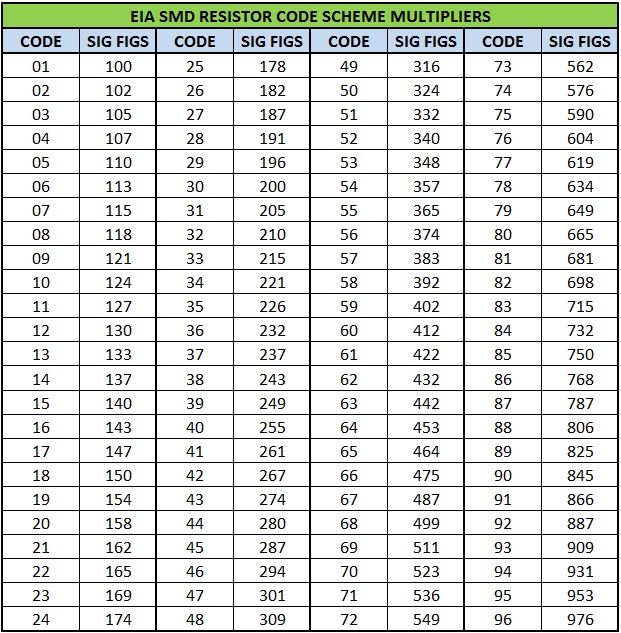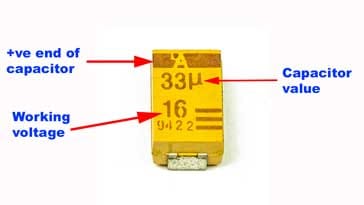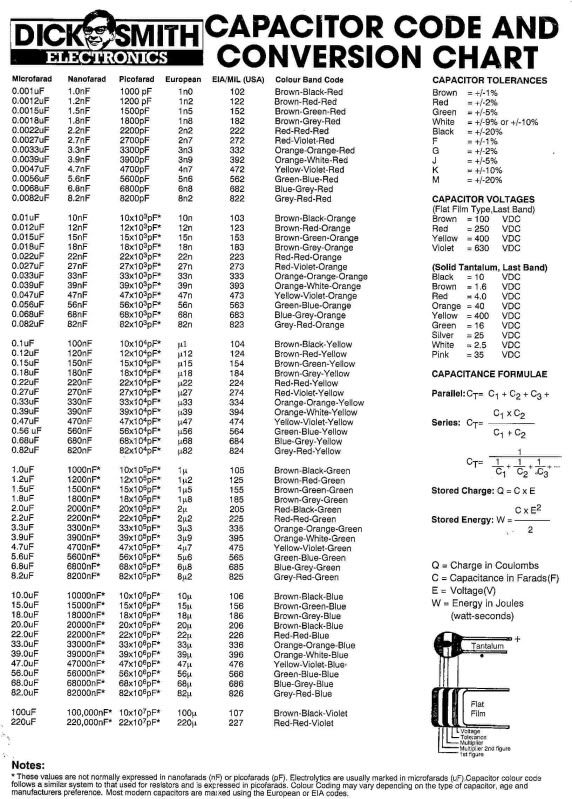

"What are the standard values?" is something I end up asking myself sometimes. picofaradsĬhoosing capacitor values can be a real headache for most hobbyists, and engineers. With all the values listed here, you will not have any need to use a calculator. This chart allows one to convert between picofarads, nanofarads, and microfarads. IEC: International Electrotechnical Commission, iec.org, made up from many national standards organizations.Here is my complete conversion chart for all standard capacitor values. Its various activities were take over by about a half dozen other organizations.

1953 to 1957.ĮIA: Electronic Industries Alliance. 5.0 Use of flux and/or cream solder should be limited to one with a halogen content of 0.1 or less. RETMA: Radio Electronics Television Manufacturers' Association. 4.0 Since chip capacitors do not have encapsulation, components of flux or detergent left over in the capacitor element after washing may be activated and invade the inside of the capacitor causing degradation of the electrical characteristics. The tighter tolerances mostly apply to small C0G capacitors and the looser tolerances to larger Class 2-4 ceramics.įor example, if you see. Once again, don't expect to find all possible combinations of values, dielectrics, and tolerances. Table 5 shows the EIA tolerance codes for ceramic capacitors. With luck, you might also find the material (C0G, X7R, etc.) and voltage rating. Values below 10 pF may use "R" for a decimal point, 4R7 = 4.7 pF for example. This, like most marking systems, is based on the picofarad, the lowest common denominator of capacitance. On small through-hole ceramics, a two-number-plus-exponent system is often (but not always) used. However, the smaller the part gets, the less information you get until, on the smallest parts there may be nothing at all. If the manufacturer has lots of room (like on big electrolytics) they will usually print everything they can value, voltage rating, temperature rating, series, even country of manufacture.

It would be nice if there was more consistency to capacitor markings. Microwave capacitors go down to at least 50 fF, but are called 0.05 pF. "Femto farad " (fF) is used for things like RAM chip storage capacitors, but there are no discrete capacitors in that size range.

Nano is rather less common than micro and pico, but it still shows up. First, let's get our nomenclature straight.


 0 kommentar(er)
0 kommentar(er)
